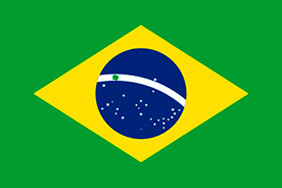A guide for you to understand what REDD+ is and how this investment aggregates value to your business as you contribute towards the conservation of forests.
The increase of deforestation and of forest degradation in the recent decades is a cause of concern, given that it has been responsible, to a large extent, for the greenhouse gases (GHG) emissions in Brazil and in the world. In face of the need of reducing these emissions and mitigating the effects of climate change, the REDD+ mechanism was created, in an international effort of researchers and with the support of the United Nations.

The importance of forests
Deforestation, forest degradation and land use change, which include activities such as agricultural and livestock farming, contribute with the total of 23% of all accumulated anthropogenic emissions of Greenhouse Gases (GHG) in the world, registered since 19611. In Brazil, these activities resulted in 69% of all national emissions in 20182.
In this context, the conservation of forests, in addition to contributing to the reduction of greenhouse gases emissions, generates other benefits, such as the protection of hydrographic basins, the stabilization of rainfall systems and positive impacts on biodiversity and local communities that depend on their resources. Additionally, the biodiversity maintained by the forests is a source of incalculable resources, which if well managed, can ensure jobs and income for millions of people in the future.
 Sources:
Sources:
• Climate Change and Land (IPCC, 2019)
• Sistema de Estimativas de Emissões de Gases de Efeito Estufa [Greenhouse Gas Emission Estimation System] (SEEG Brasil, 2018)
And what is REDD+?
REDD+ is a mechanism that aims to avoid greenhouse gas emissions associated to forest deforestation, allowing the remuneration of those who maintain the standing forests. When preventing threated forest areas from being deforested, it is possible to generate carbon credits, which once marketed, can turn the forests economically more attractive than other forms of use of the land. This mechanism closes its cycle at the moment when revenues proceeding from carbon are invested in the maintenance of the forest and in the sustainable management of its resources.


In practice, how does it work?
Initially, studies are conducted to assess the potentiality of implementation of a REDD+ project in the area. For this, the conserved forest area in the property and the existence of risk of deforestation of the area based on the regional context where it is inserted are analyzed, subsequently the potential deforestation vectors in the region are identified, and from this analysis strategies are plotted based on:
• Financial incentives to reduce deforestation, mainly in the places where the forests are converted to agriculture, for example.
• Reduction of degradation in forests that lost part of their ecological value.
• Promotion of sustainable development generating environmental, social and economic benefits.
After monitoring and assessing the effectiveness of the applied strategies, the calculation of CO2 emissions that were avoided is carried out. Then, the carbon credits are generated.

Are REDD+ projects reliable?
Independent certification bodies make available methodologies and guidelines for implementation, monitoring, reporting and verification of REDD+ projects, ensuring high levels of assurance and stringent technical requirement, in addition to transparency and necessary involvement of communities and other possibly impacted stakeholders.
The most recognized organization of the voluntary carbon market is Verra, which makes available Certification standards VCS and CCB. Verra is internationally recognized for its expertise and technical excellence in certifying greenhouse gas (GHG) emission reduction projects and the social, environmental and economic benefits associated to these projects.
Before investing in a project, it is essential to find out whether it has certification.
REDD+ Rio Preto-Jacundá Project gains room at Verra’s site
Is REDD+ producing result?
Yes! The deforestation rate in the areas where Biofílica’s REDD+ projects operate was reduced by 75% between 2015 and 2018, going against the deforestation rate in the Brazilian Amazon, which grew by 7% in the same period.
All in all, there are 1.2 million conserved hectares, that protect at least 340 species of flora, 1,200 species of animals and where about 1,500 people live who were impacted by our projects until the end of 2019.
The importance of forest management and conservation reflected in our growth
Who can invest in REDD+ projects?
Currently, institutions and companies that want to compensate their greenhouse gas (GHG) emissions and contribute to financing the conservation of forests through the purchase of REDD+ carbon credits. The projects are also funded by countries, through environmental preservation programs.
Why are leaders with vision investing in REDD+ projects
In the extremely competitive scenario we have today, leaders from all sectors face daily the challenge of standing out in the market. At the same time, the concern in assuming the responsibility of environmental impact generated by their activities is growing.
Compensating emissions by investing in REDD+ projects is an innovative way of solving these two issues, encompassing benefits such as:
• Recognition and solution of environmental impacts in the operations
• Engagement of employees and customers
• Improvement in Environment, Social and Governance (ESG) indicators
• Differentiation in the market
• Increase of the brand’s reputation and image
• Attraction of investors
Start making a difference now for the planet and for your company.




